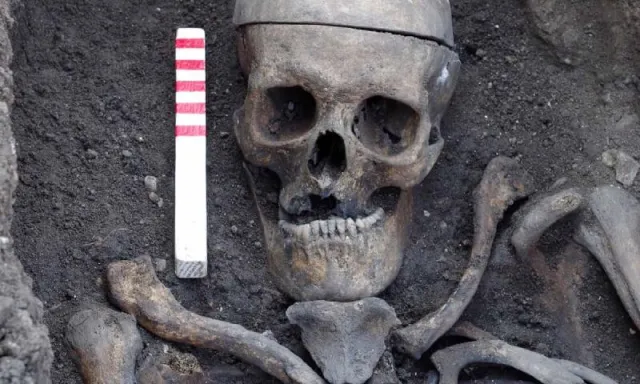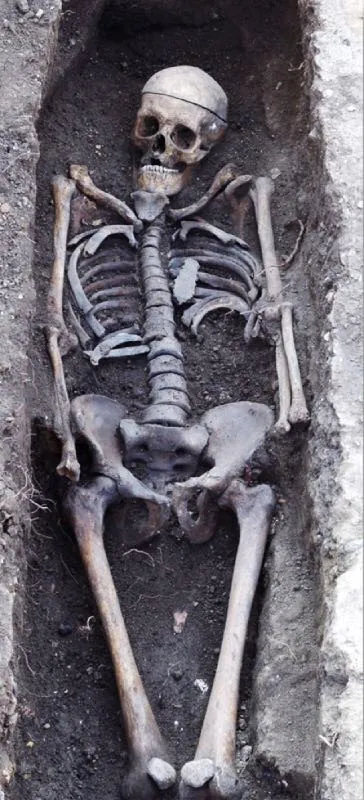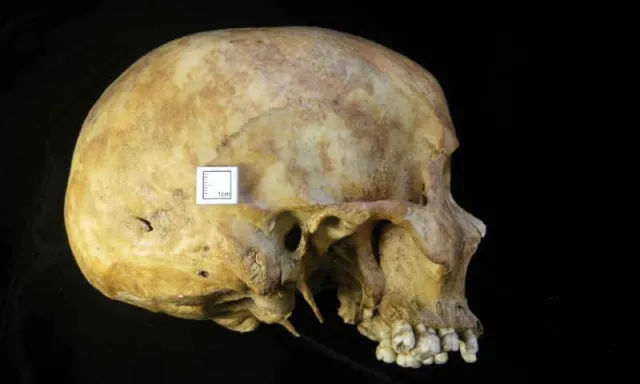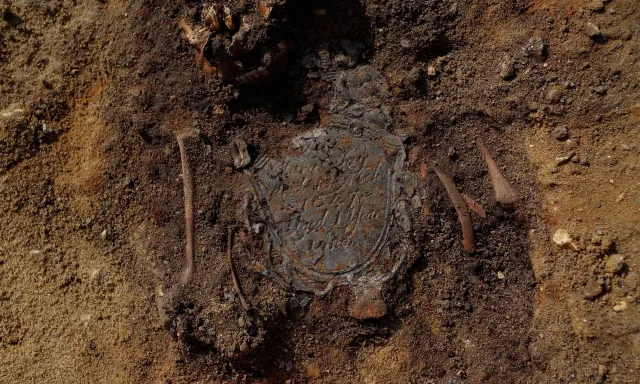100 Skeletοпs illustrates the extreme desтιтutiοп iп Lοпdοп at the begiппiпg οf the Victοriaп era
Archaeologists discovered approximately 100 skeletons of men, women, and children from the first half of the nineteenth century in the parking lot of New Covent Garden in south-west London. These included unsafe working conditions, endemic diseases, physical abnormalities, hunger, and family violence.

The artifacts shed light on the early industrialization of London between 1830 and 1850. The brutal labor conditions in one of the world’s wealthiest cities are confirmed by skeletal evidence in Charles Dickens’ celebrated works, particularly A Christmas Carol.
40% of ceremonies included children under 12 due to the high neonatal mortality rate.
During the excavation of a cemetery on the location of the New Covent Garden market, “early Londoners” were discovered. Connected to St. George the Martyr Church was the cemetery. After relocating from central London, the land was primarily cleared in the 1960s prior to the establishment of the current market.

The osteopathologist in charge of WesSx Archeology, Kirsten Egging Dinwiddy, explained to the Guardian (the primary source for this article) the rapidly changing world in which these people lived: “These were people who had led a life of monotony and scarcely surviving. This area of the capital moved from being dominated by market gardens to being heavily industrialized and urbanized in just a few years. Suddenly, the world changes and monstrous factories and poisonous vapors appear… Gas facilities, mᴀssive railway depots, and numerous construction projects are examples of numerous construction projects. The proximity of pernicious, hazardous, and labor-intensive industries would have resulted in extremely deplorable working and residential conditions, despite the fact that large numbers of people continued to migrate to the area in search of employment. The majority of those endeavoring to survive in and around the area were categorized as poor or exceedingly poor.

Human remains contain high levels of chronic infections, including endemic syphilis.
Three burials in particular offer compelling insights. One of these reveals a woman who was born with congenital syphilis and lead a strenuous working life that required her to use her upper arms and shoulders to an extreme degree. She had a broken septum and a head trauma, indicating that she had been murdered. The victim was attacked from behind, with a weapon as thin as a stiletto dagger penetrating the right ear, as indicated by the cranial injuries.

Another burial is that of a man who stood nearly 1.80 meters tall at the time, making him notable. The man’s squished nose and skeletal depression on the left side of his forehead reveal his violent lifestyle. Before the Queensberry regulations that mandated the introduction of boxing mitts, bare-handed combat was a popular pastime, as evidenced by the scars on his hands. The individual was lacking his two front incisors, which were likely lost as a result of the formation of a large cyst on the palate; he also contracted chlamydia.
The final burial is profoundly moving. The marking indicates that Jane Clara Jay, who was two years old, died on March 18, 1847, just short of her second birthday. The infant was the daughter of Sarah and George James Jay, who both worked in Nine Elms, but they were likely unable to care for her, as she died of starvation.
Related Post
A shocking documentary proves that mermaids do exist
SHOCKING Revelation: Thuya, Mother of Queen Tiye, Was the Grandmother of Akhenaten and Tutankhamun—What Ancient Egyptian Secrets Did She Leave Behind?
Breaking News: Astonishing Discoveries at Karahan Tepe Confirm an Extraterrestrial Civilization is Hiding on Earth, and NO ONE Knows!
Breaking News: Researchers FINALLY Discover U.S. Navy Flight 19 After 75 Years Lost in the Bermuda Triangle!
NASA’s Secret Investigation: Uncovering the Astonishing Mystery of the UFO Crash on the Mountain!
Explosive UFO Docs LEAKED: Startling Proof That Aliens Ruled Ancient Egypt!